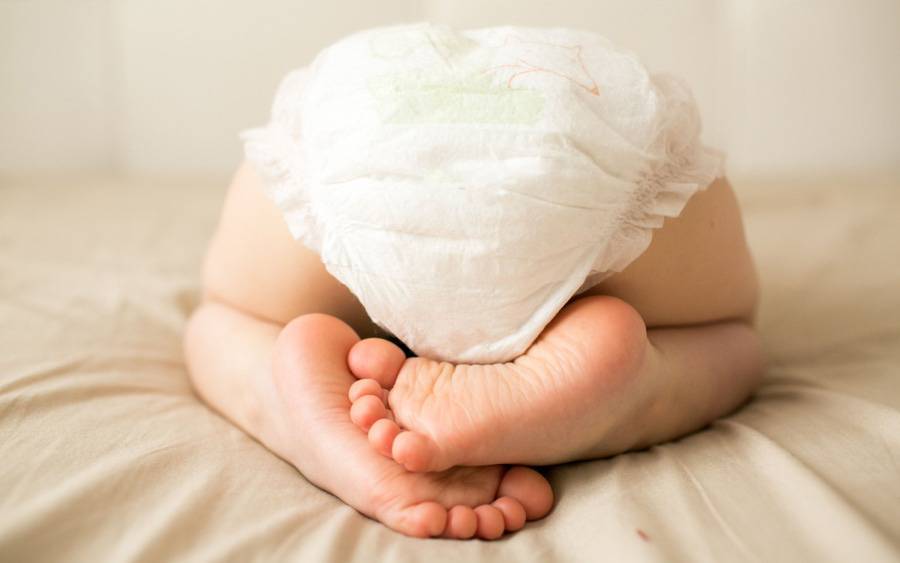What Are Common Causes and Treatments for Diaper Rash?
How to identify, soothe and prevent diaper rash

How to identify, soothe and prevent diaper rash
Parenthood brings so many joys – first smiles, first words, first steps – and a few challenges too. Diaper rash is one.
At least half of all babies will get a diaper rash at some point, according to the American Academy of Pediatrics.
Rest assured that a diaper rash is not a reflection of your parenting. It’s just a fact of life.
Babies have very delicate skin. They occasionally get diaper rashes, sometimes causing discomfort and fussiness. But by knowing why it happens, you can manage and prevent its recurrence, perhaps sleep better and ensure your little one’s comfort.
“Knowledge empowers parents to effectively manage and respond to a diaper rash, including knowing when to seek medical help,” says Caroline Piggott, MD, a dermatologist at Scripps Clinic Rancho Bernardo and Scripps Clinic Rancho San Diego.
What is a diaper rash?
A diaper rash is a common condition that causes a baby’s skin to become sore, red, and irritated. The rash can be mild or severe and usually happens in the diaper area but can spread to other places.
Depending on its cause and severity, a diaper rash can last anywhere from a few hours to several days. Most are typically mild and manageable with proper attention.
“To help heal faster, keep the area clean and dry, use wipes without fragrance, and change wet or soiled diapers quickly,” says Dr. Piggott, who specializes in pediatric dermatology.
What are types of diaper rash?
Diaper rash is most common in babies 9 to 12 months but can happen any time the child wears a diaper. It is more common when the child is having frequent bowel movements or diarrhea.
Irritant diaper rash
Irritant diaper rash, also called irritant dermatitis, is the most common type. It occurs when the skin is in wet or dirty diapers for a long time. Urine and stool from the diaper can irritate the baby’s skin.
Signs include red irritated skin in the diaper area.
Infections
When the skin under the diaper becomes irritated, bacteria and yeast can infect the skin and worsen a rash.
Yeast infection
A yeast infection is a fungal infection cause by a type of yeast that lives on the body. It is bright red with clear borders and may have small red pustules. It occurs more frequently when infants are on antibiotics or have had recent bouts of diarrhea.
Bacterial infection
Bacteria like staph or streptococcus can sometimes invade the broken skin and cause a rash. This might present as yellow crusted areas or blisters filled with pus.
Doctors recommend against using over-the-counter antibiotic ointment for diaper rashes as ingredients in these products can worsen skin irritation.
Allergy
A baby may develop a rash when their skin reacts to common allergens – which may include baby wipes, laundry detergent and the type of diaper they wear. The rash can occur regardless of whether the diaper is cloth or disposable.
Prevention and treatment of diaper rash
Treatment and prevention of diaper rash have similarities and differences. Knowing what to do in each situation can help parents handle diapering with confidence.
Similarities in prevention and treatment
1. Keeping it clean and dry
Changing diapers regularly prevents rashes by not leaving the baby in a wet or dirty diaper for too long. Frequent checks and diaper changes are important for healing without more irritation during treatment.
When cleaning, make sure to pat the skin dry and not scrub.
2. Choosing the right diaper
Choosing the right diaper for your baby’s skin is important, whether you are in a preventive or treatment stage. Consider their sensitivity and fit. Some babies may be sensitive to certain materials or brands.
For those using cloth diapers, use a mild, fragrance-free laundry detergent. This reduces potential skin irritants.
3. Use of barrier creams
Barrier creams can protect the baby’s skin from urine and stool. Petroleum jelly or zinc oxide cream are good choices. Barrier creams also protect rashes from getting more irritated. Make sure to apply a thick layer.
Differences in prevention and treatment
1. Bathing routine
If a baby has a diaper rash, their bath routine may have to change. This is necessary even if they typically have regular baths with mild soap. Consider avoiding soaps and bathing in just warm water to soothe irritated skin.
2. Level of vigilance
Regular checks and prompt diaper changes help prevent diaper rashes. Treatment requires more frequent checks and close observation of the rash’s progression.
3. Medicated creams
Medicated creams typically aren't used to prevent diaper rashes. Treatment may involve specialized ointments or creams, particularly if prescribed by a doctor.
4. Comfort monitoring
Prevention requires watching for signs of discomfort. Treatment of diaper rash requires close monitoring of the baby’s comfort, sleep and whether they appear to be in pain.
When to call your doctor?
It is essential to see a doctor if:
- The rash doesn’t improve after a few days of home treatment
- Blisters, pus-filled pimples, or oozing yellow patches appear
- The baby has a fever or is more irritable than usual
Remember, if something doesn’t feel right, it’s better to get a medical opinion.
“Despite all your best efforts, some diaper rashes need medical attention. If the rash stays, there are sores or your baby hurts, go see your doctor,” says Dr. Piggott.